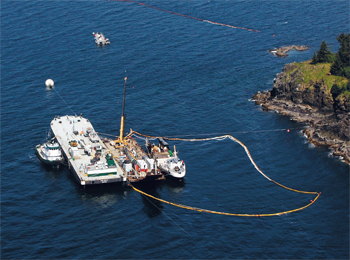An international survey has identified over 8,500 sunken shipwrecks in marine waters around the world, including more than 1,500 sunken tank vessels larger than 150gt and nearly 7,000 sunken non-tank vessels greater than 400gt, 75 percent of which were World War II losses.
According to the American Salvage Association (ASA) and the North American Marine Environmental Protection Association (NAMEPA), who have sponsored a conference titled ‘Wrecks of the World II: Evaluating and Addressing Potential Underwater Threats’, these wrecks may contain as much as 20 million tons of oil and other hazardous materials. Because of their continually deteriorating condition, the risk of these materials seeping into the sea is growing each year.
The salvage associations noted that oil recovery operations have been conducted to clean a number of wrecks along the North American coastline over the past few years. These include the Liberty ship William Beaumont, which sank off Texas in 1971, the 1924-built Princess Kathleen (pictured), which hit rocks and slid into deep water on the Alaskan coast in 1952, and the oil tanker Montebello, which was torpedoed off California just a few days after the attack on Pearl Harbor.
Salvage experts point out that, from the viewpoint of environmental and economic impacts, there is little difference between oil spilling from a sunken vessel and oil spilling from a modern-day vessel casualty, with the exception that, while there is no way to predict the location or timing of the next major oil spill, potentially polluting wreck sites are known, and the probability of a spill event is quantifiable or even inevitable.


